#Rococo painter
Explore tagged Tumblr posts
Text

Anna Dorothea Therbusch (German, 1721-1782), Self portrait as flora (Circa 1765-1768) x
Anna Dorothea Therbusch (born Anna Dorothea Lisiewski, Polish: Anna Dorota Lisiewska, 23 July 1721 – 9 November 1782) was a prominent Rococo painter born in the Kingdom of Prussia. About 200 of her works survive, and she painted at least eighty-five verified portraits. via Wikipedia Her Father was Georg Lisiewski (1674–1751), a Berlin portrait painter of Polish stock who arrived in Prussia in 1692.
10 notes
·
View notes
Text

María Hahn, the Painter’s Wife (1901), (detail), by Raimundo de Madrazo y Garreta (Spanish, 1841-1920), oil on canvas, 192 × 128 cm, Museo Nacional del Prado, Madrid
#maría hahn the painter’s wife#raimundo de madrazo y garreta#painting#oil on canvas#detail#painting detail#museo del prado#madrid#20th century#realism#my upload#rococo#art#fine art
478 notes
·
View notes
Text

Toilette of Belinda, 17th century
By Antonio Bellucci
#art#painting#fine art#classical art#italian art#italian painter#italian artist#oil painting#portrait#female portrait#belinda#beauty#17th century art#17th century#european art#rococo#rococo art#classical beauty#1600s#long hair
65 notes
·
View notes
Text
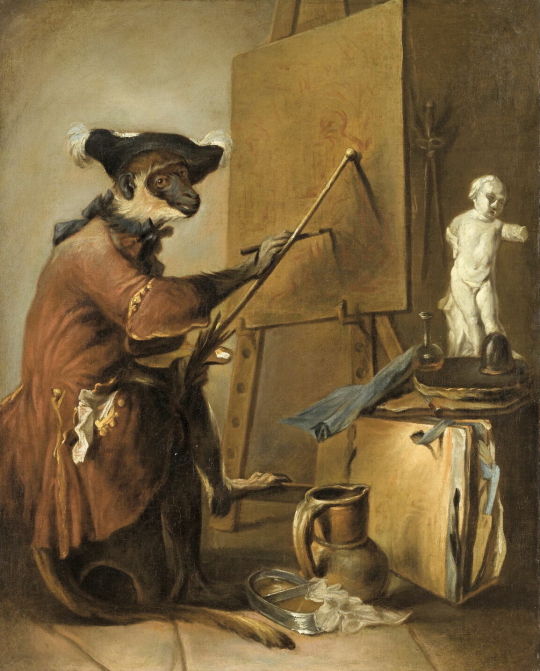
Jean-Baptiste-Siméon Chardin (French, ) • The Monkey Painter • 1739-1740
Although not a self-portrait in the true sense, I'm including it here because it's so fascinating. The monkey is the artist as subject, gazing away from the canvas at what is perhaps the subject it is painting.
Firstly, there is the Rococo era's obsession with paintings of monkeys. Called Singerie, it is a French term describing visual arts depicting monkeys engaged in human activities. It was at the height of its popularity in mid 18th century France. It is said that even Madame de Pompadour succumbed to the monkey craze!
Secondly, this work serves as a commentary on the state of art and artists in French society at the time. Chardin was a member of the French Royal Academy, yet he was critical of the academy's narrow-minded attitudes toward what was considered art worthy of its stamp of approval. This archaic focus begged the question – does the Royal Academy want artists that can think critically, or does it simply want imitators of their narrow rules? Hence, a monkey can be trained to paint but a true artist analyzes and discerns myriad aspects of their subjects.

Pierre-Louis de Surugue (French, 1716–1772) • The Monkey Antiquarian • 1743 • after Jean-Baptiste Siméon Chardin
The Monkey Painter and the print above were frequently reproduced. The caption here translates: "In the obscure maze of ancient monuments Why, learned man, do you put yourself to so much trouble? For truly philosophical eyes, our century Provides enough to keep one busy."
#art#art history#painting#oil painting#pierre-louis surugue#prints#art prints#john baptiste siméon chardin#french artist#the monkey painter#rococo monkey craze#singerie#18th century european art#the canvas mirror art blog#art blogs on tumblr#art lovers on tumblr#artwork
75 notes
·
View notes
Text
The Swing
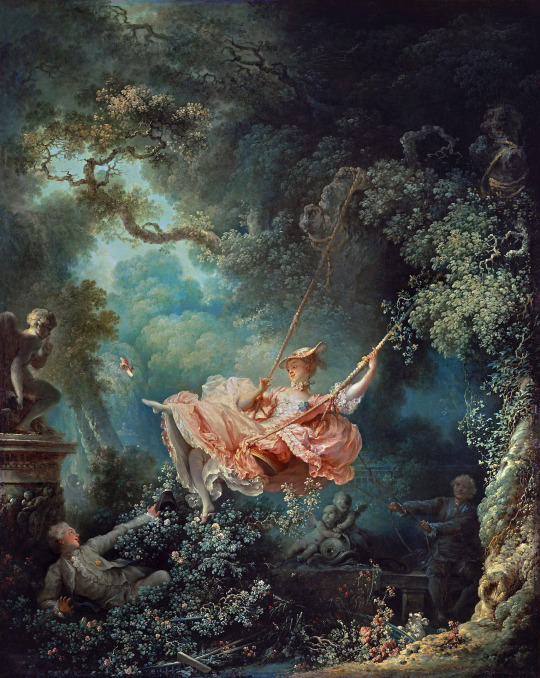

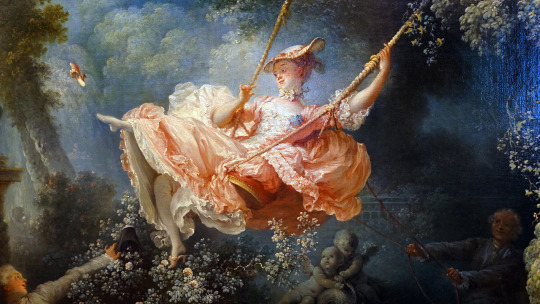

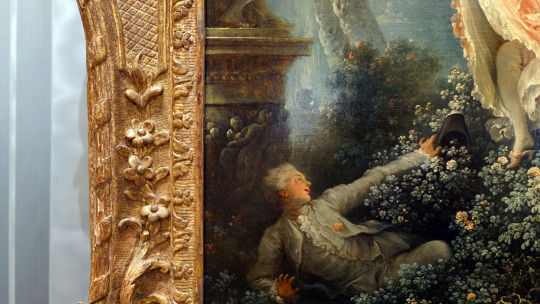
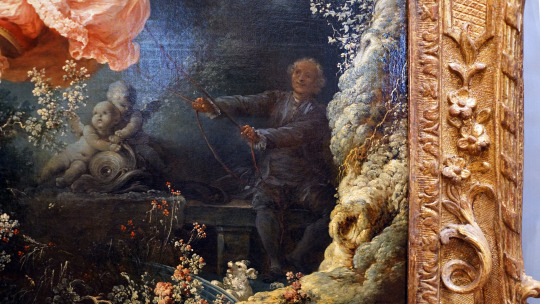
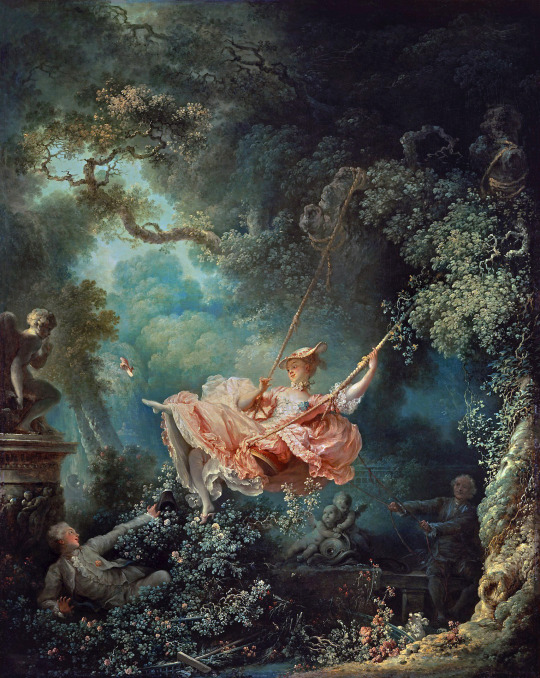
Jean-Honoré Fragonard, The Swing, oil on canvas, 1767 (Wallace Collection, London) (photo: Steven Zucker, CC BY-NC-SA 2.0)
#art#artwork#art history#artist#paint#drawing#france#painting#art detail#rococo#rococco#the swing#french#painter#jean honoré fragonard#hedonism#18th century#18th century art
151 notes
·
View notes
Text

Serena Reading
Artist: George Romney (British, 1734 - 1802)
Style: Rococo
Genre: Portrait
Date: 1785
Collection: Private Collection
"She always has her nose in a book and her head in the clouds." ~ Grace Metalious (1924–1964)
#portrait#oil canvas#leisure#book#woman#george romney#rococo#18th century#british painter#candle#hat#red chair#candlelight#fashion#dress
40 notes
·
View notes
Text

Jean-Baptiste Greuze (1725-1805)
Portrait de Madame de Champcenetz, née Albertine Élisabeth de Nyvenheim (1742-1805), 1770
#Jean-Baptiste Greuze#painter#artwork#painting#18th century#history of art#portrait#Albertine-Élisabeth Pater#georgian#rococo
26 notes
·
View notes
Text

Harlequin is the bed soldier by Giovanni Domenico Ferretti (15.06.1692-18.08.1769)
37 notes
·
View notes
Text

Anne Vallayer-Coster (French, 1744-1818) • Still-Life with Tuft of Marine Plants, Shells and Corals • 1769
#anne vallayer coster#french artist#still life#rococo#woman painter#woman artist#rococo painting#art of the still life blog#painting#fine art#art#18th century painting
133 notes
·
View notes
Text

Allegory of Lasciviousness
Artist: Pompeo Girolamo Batoni (Italian, 1708-1787)
Date: 1747
Medium: Oil on canvas
Collection: Hermitage Museum, Saint Petersburg, Russia
#allegorical art#allegory of lasciviousness#female figures#rococo style#pompeo batoni#italian painter#european art#1737#18th century painting
12 notes
·
View notes
Text

Witches Sabbath
Francisco de Goya, 1798
#art#painting#francisco de goya#Goya#witches sabbath#Spanish art#spanish painter#romantic painter#rococo#romanticism#xviii century
8 notes
·
View notes
Text
Rosalba Carriera
Rosalba Carriera (12 Jan 1673 – 15 Apr 1757) was a Venetian Rococo painter. In her younger years, she specialized in portrait miniatures. via W #PalianSHOW
Rosalba Carriera (12 Jan 1673 – 15 Apr 1757) was a Venetian Rococo painter. In her younger years, she specialized in portrait miniatures. Carriera would later become known for her pastel portraits, helping popularize the medium in eighteenth-century Europe. | Self-Portrait Holding a Portrait of her Sister, 1709, pastel on paper, 71 x 57 cm, Galleria degli Uffizi, Firenze. She is remembered as…
#italian#painter#Rococo painter#Rosalba Carriera#Venetian#Venetian Rococo#Venetian Rococo painter#woman painter#women painters
2 notes
·
View notes
Text


Chronos and Venus, 18th century, sketch 59x43 cm
8 notes
·
View notes
Text


Two portraits of Marie Adélaïde de France by Jean-Marc Nattier
#new post#historical fashion#art#portait#jean marc nattier#french fashion#french painter#Marie Leszczyńska#historical#1740s#18th century fashion#18th century#1750s#kingdom of france#rococo fashion#rococco#royals#royalty
15 notes
·
View notes
Text
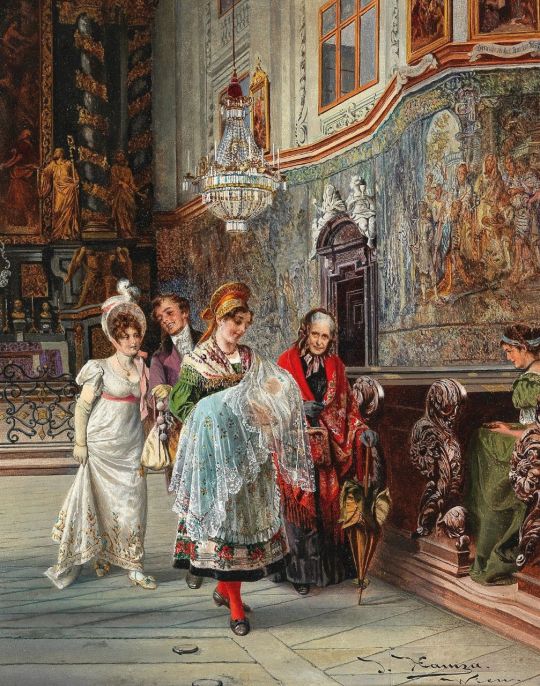
After The Baptism
By Johann Hamza
#art#painting#fine art#classical art#austrian art#austrian painter#beauty#genre painting#oil painting#austrian artist#rococo#european art#culture#aesthetic
39 notes
·
View notes
Text

Jean-Baptiste Greuze (1725-1805)
Autoportrait, 1760-69
#Jean-Baptiste Greuze#painter#painting#artwork#18th century#history of art#self portrait#georgian#rococo
8 notes
·
View notes